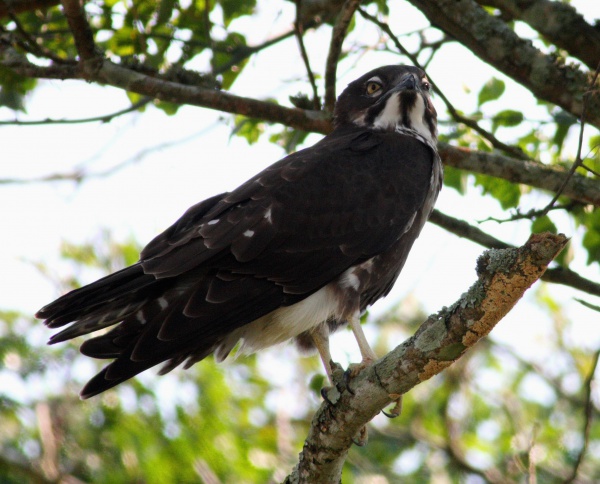Facts About Bat hawk
The bat hawk is a captivating bird of prey found across sub-Saharan Africa, South Asia, and as far afield as New Guinea. This sleek, medium-sized raptor is easily identifiable by its dark brown or black plumage, distinctive white patches on its throat and chest, and striking white streaks above and below its eyes. Juvenile bat hawks present a more mottled brown appearance.
These birds are quite adaptable in terms of their habitats. They flourish in diverse environments ranging from dense rainforests to semi-arid veld areas, provided there is ample open space for hunting. Their primary prey is bats, but they also consume small birds and insects. Remarkably efficient hunters, bat hawks often catch their prey mid-air during twilight hours.
During the breeding season, bat hawks perform intricate aerial displays to attract mates. They construct their nests from sticks, and the female is responsible for incubating the eggs. Once the chicks hatch, both parents are involved in feeding them. Notably, their breeding cycles are synchronized with those of bats, ensuring a consistent supply of pregnant females and young bats for sustenance.
Despite their extensive range and stable overall population, bat hawks face localized threats that have led to their endangered status in South Africa. Globally, however, they are classified as of least concern by conservationists.
The name "bat hawk" is derived from their knife-like bill, and their scientific classification has been a topic of debate among researchers over the years. Regardless of their nomenclature, these birds are an impressive and unique component of the world's avian population.

 Benin
Benin